MyHeritage Shares Holocaust Survivor Story with Descendants
About a year ago, Greek-American family historian and Emmy award-winning writing, producer and author Yvette Manessis Corporon published When the Cypress Whispers: A Novel, a novel based on true stories gathered from her grandmother. Among the anecdotes was a decades-old secret from the Greek island of Erikoussa: that the entire island joined together to save a Jewish tailor and his family from the Nazis.
It’s a heroic and dangerous story of Holocaust survivors. When the Nazis arrived in Corfu, they killed most of the Jewish residents. One family escaped to Erikoussa: a man named Savas and his wife and three daughters.
“Yvette’s grandmother was one of those Islanders,” says Daniel Horowitz, Chief Genealogist at MyHeritage. “She was good friends with one of the girls and so Yvette turned to MyHeritage to ask if we could help find the family. We did, and an emotional (although buy pet medication online uk virtual) reunion took place between Yvette, and Rosa’s sons.” Apparently the story did not get passed down through Savas’ family. They were stunned to learn about their family’s experience on the island, many years after their relatives had left it for Israel and other parts of the world.
Below, watch an Israeli newscast on the story (with English subtitles), or click here to read a news story about it (in English). Click here to learn why we here at Genealogy Gems partner with MyHeritage, a leading international resource for family history trees and records
 Are you an avid reader? Check out the Genealogy Gems Book Club, which features great reads (fiction and nonfiction) for those who love history and family themes. (P.S., if you ever purchase a book we recommend, we appreciate you using our links! Your purchases keep the free Genealogy Gems podcast FREE.)
Are you an avid reader? Check out the Genealogy Gems Book Club, which features great reads (fiction and nonfiction) for those who love history and family themes. (P.S., if you ever purchase a book we recommend, we appreciate you using our links! Your purchases keep the free Genealogy Gems podcast FREE.)
Family Maps and Migration Routes Traced with New Tech Tools
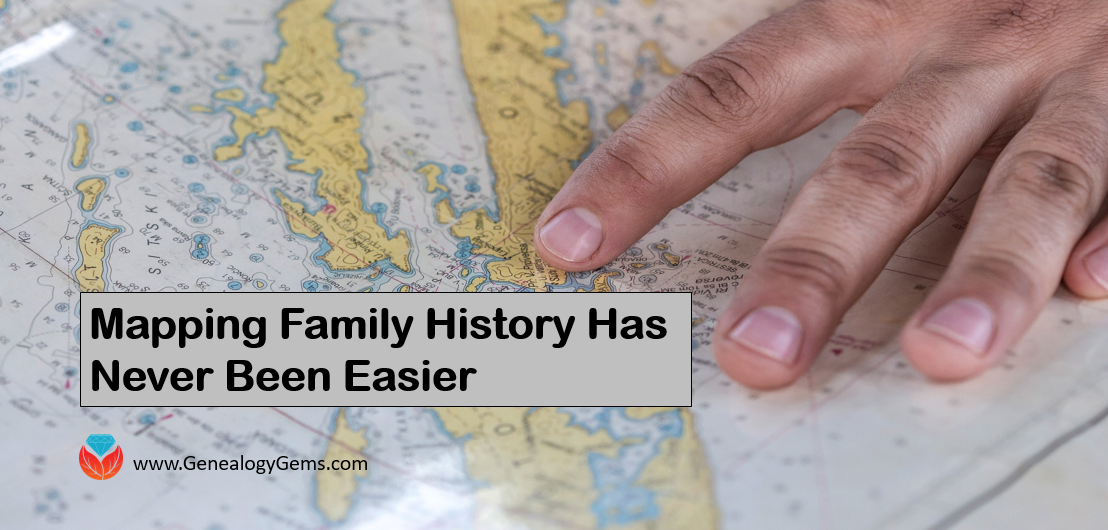 Family maps and migration routes can sometimes uncover new record finds and answer brick wall questions. It’s fast and simple to use these free tech tools to map your family’s history! I used them to track my ancestors as they trekked from the eastern seaboard to the Midwestern United States and found some fantastic leads!
Family maps and migration routes can sometimes uncover new record finds and answer brick wall questions. It’s fast and simple to use these free tech tools to map your family’s history! I used them to track my ancestors as they trekked from the eastern seaboard to the Midwestern United States and found some fantastic leads!
There are two online treasures I have just discovered. FamilySearch and MyHeritage family trees can now be mapped with some neat interactive tools. MyHeritage just launched their PedigreeMap saying it is an “innovative way to view your family history,” and I think they are right. I have used migration maps to help me overcome brick walls and questions in my research for years. Using these free online tools have made it really fun and not difficult at all.
Creating Family Maps and Migration Routes at MyHeritage
PedigreeMap is free for all MyHeritage users. To access it, log on or create a MyHeritage account. If you are new to MyHeritage, you will be prompted to begin creating your free family tree when you click Sign up at the top right corner of their homepage.
Once you have created your family tree, find it by clicking Family Tree and choosing Manage trees from the pull-down menu.
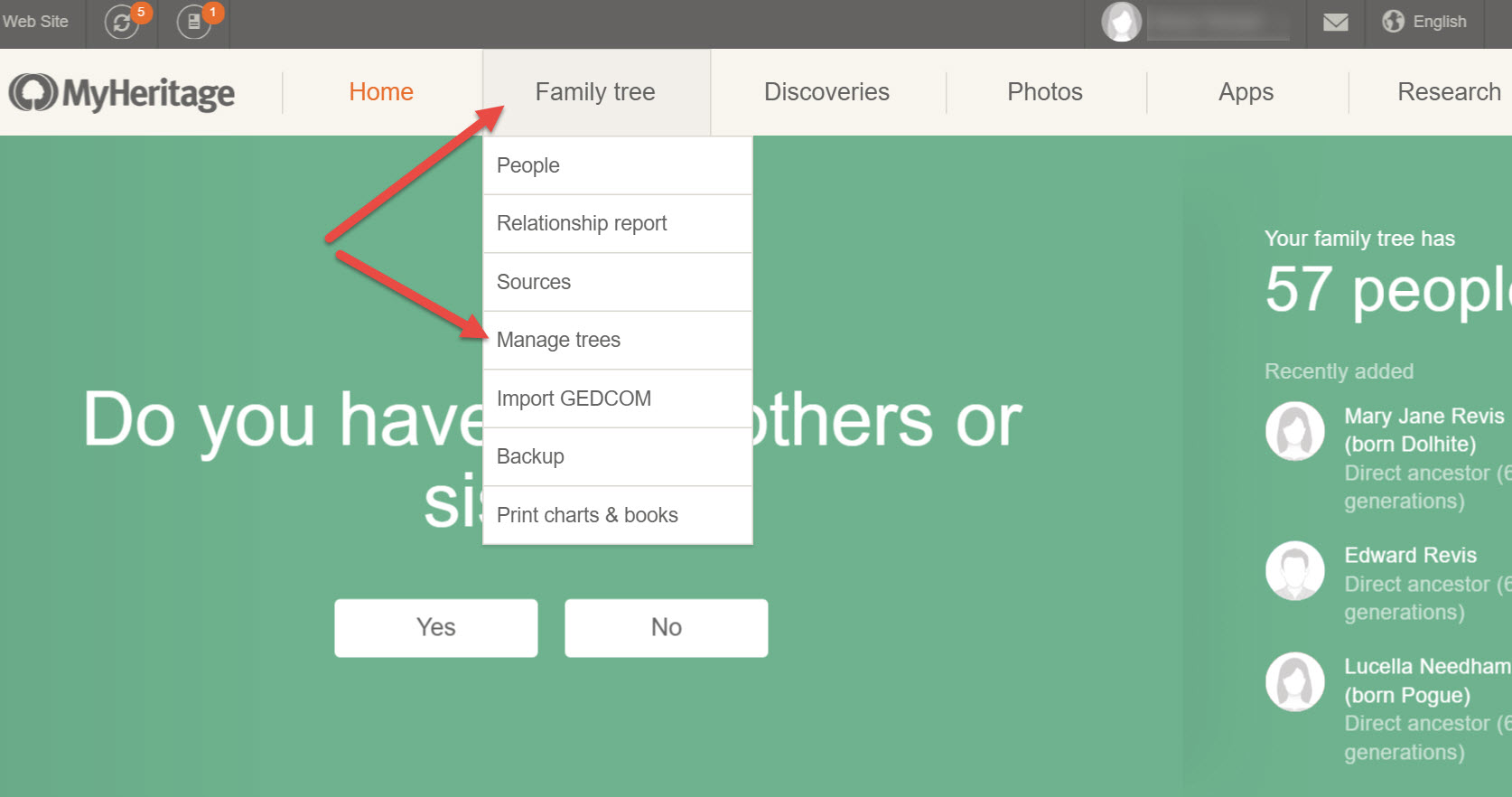
To use the PedigreeMap feature, choose your family tree from the list and then click on Apps and choose PedigreeMap from the pull-down menu.
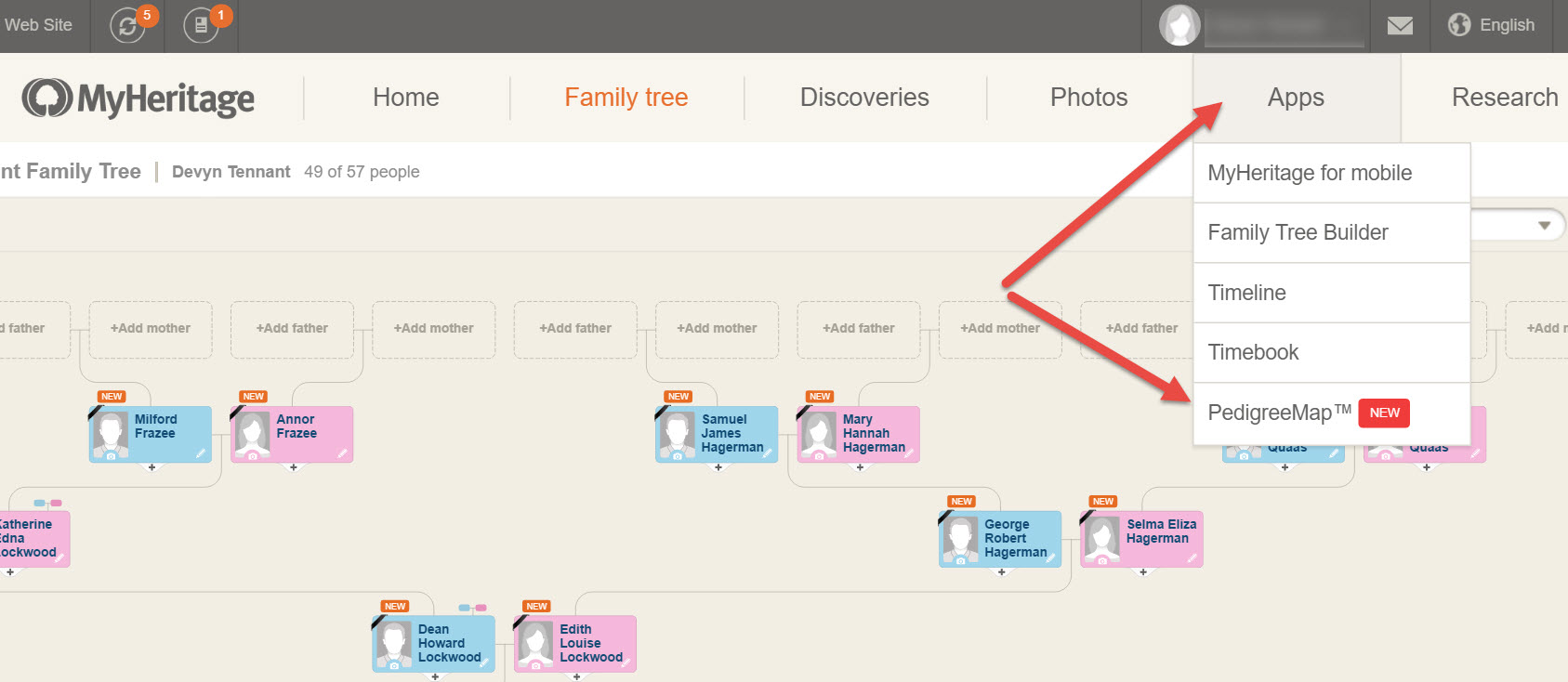
You will be able to see a map of the entire world in which your ancestors lives are plotted. From my map below, I can see the large concentration in the eastern half of the United States, but also the location of my ancestors from Europe.
Not only are genealogical events like births, marriages, and deaths plotted on your map, but if you put in a location of a picture, it will plot that too. You will notice, on the left-hand side there is a list of all the places that appear in your family tree. The numbers on the list match up to the number of each place in your family tree.
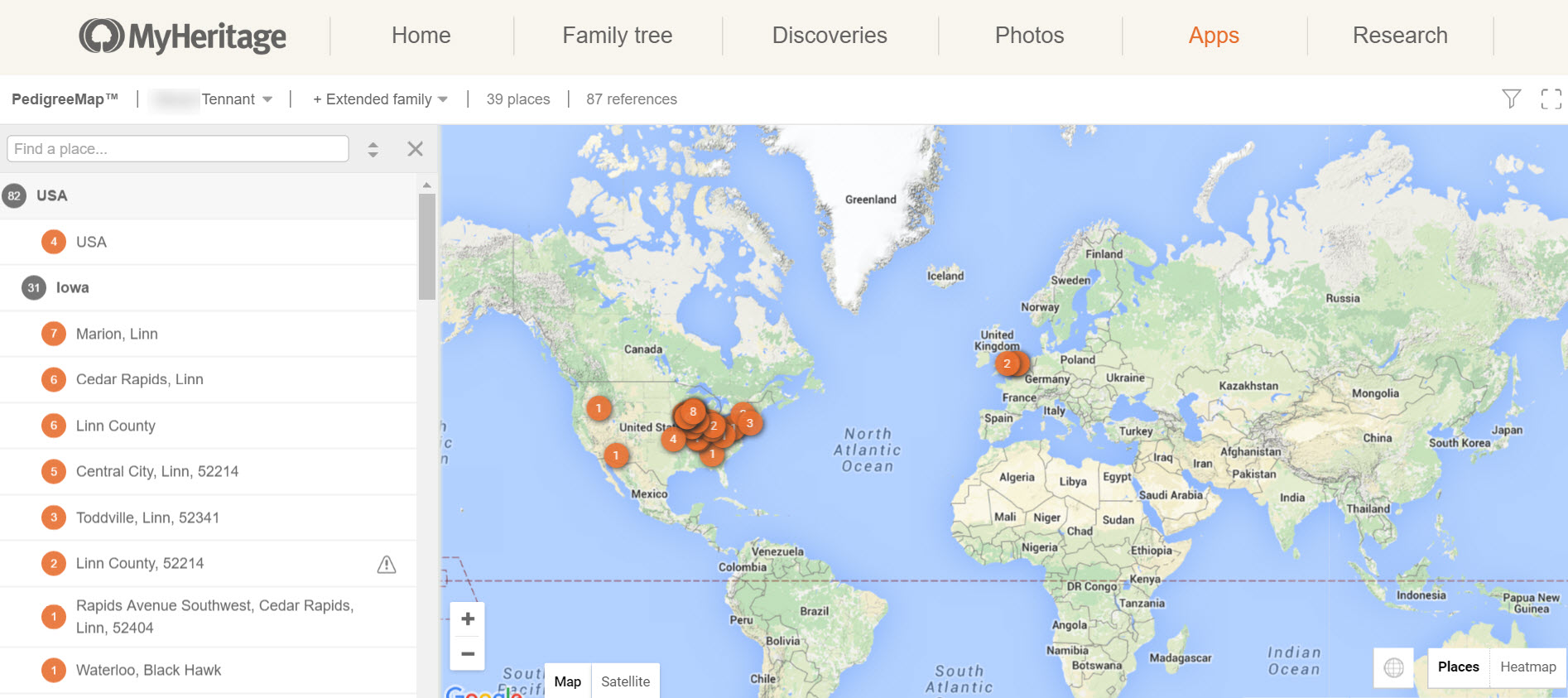
You can zoom in or zoom out, but my favorite part is clicking a location in the list to the left. For example, if I click on Marion, Linn, another list pops up on the right. This list shows me what events took place in Marion, Linn County, Iowa.
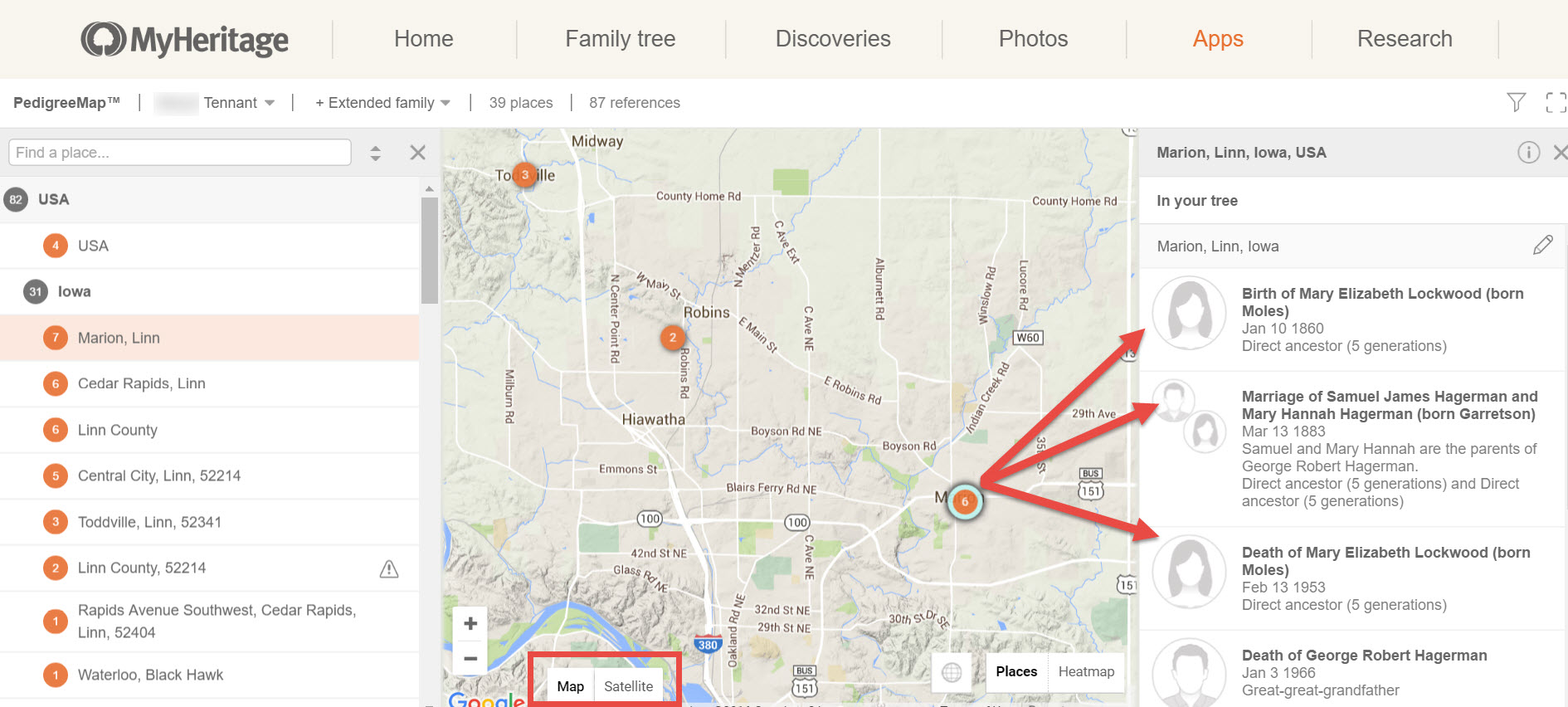
Additionally, I can see major roads, rivers, and hills. I can even click on the satellite view to see the street where my great-grandparents were married!
There are many more wonderful tools on PedigreeMap that you will want to check out. To learn more about all the unique features, read their article here.
Creating Family Maps and Migration Routes with FamilySearch
RootsMapper has been around awhile and is an interactive mapping website that works with FamilySearch. As you know, FamilySearch allows users to create a family tree online and search all their records for free. Like PedigreeMap, you will need to create your free account and family tree at FamilySearch. Then, go to the FamilySearch Apps page and click on RootsMapper. Now, click Get Started.
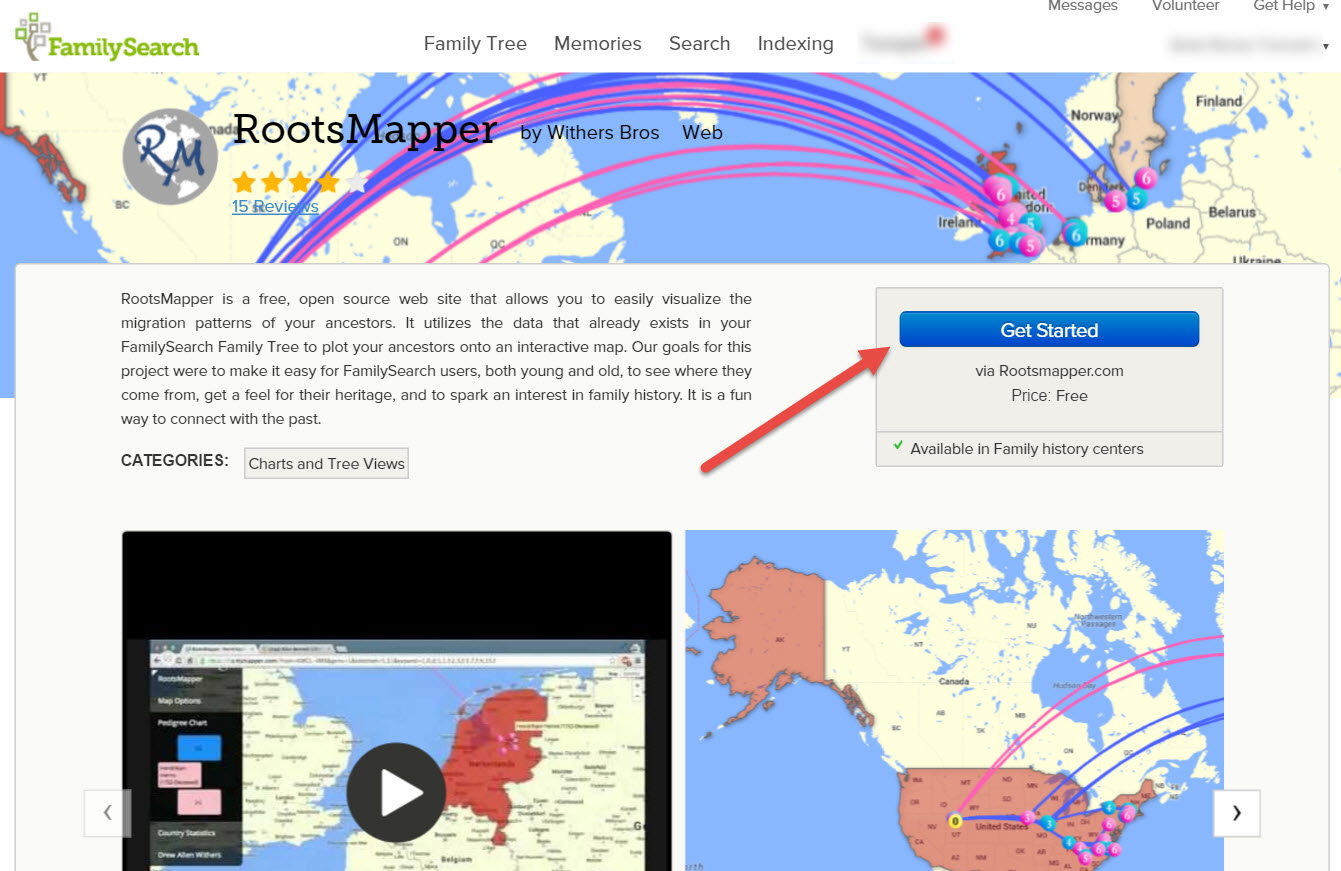
When you are redirected to the RootsMapper homepage, click Login to begin mapping. You will use your FamilySearch username and password. By clicking Accept, you give permission for RootsMapper to use your FamilySearch tree data.
The interactive map has various features. I particularly like the lines showing both the migration of my paternal line and my maternal line.
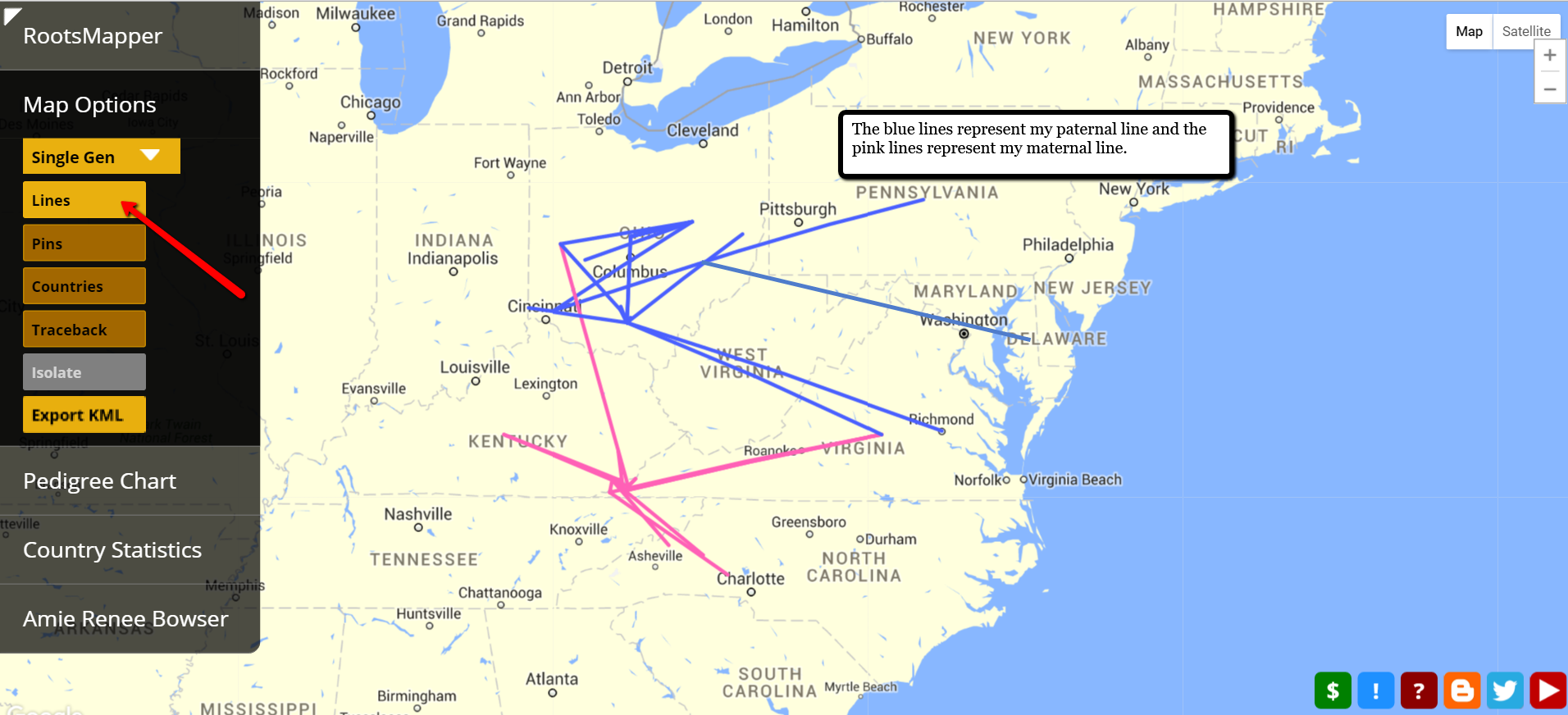
Did you notice my paternal line goes right through modern day West Virginia? Several years ago, I had “lost” my Walls family line. By plotting their known whereabouts on a map and connecting the dots, I could see possible migration routes. In fact, during that time frame, they likely took nothing but trails into Monongalia, Virginia. I did a search for records along this path and was surprised to find my fifth great grandfather on a tax roll for Virginia in 1790!
You can play around with the settings and map just one generation, five generations, or even ten generations. The options allow for pins, migration lines, changing the root person you are charting and much, much more.
It really is amazing how innovative genealogy research is today. The Genealogy Gems team delights in sharing new tech tools and tips to help you in your genealogy goals. Why not try out one of these family map and migration route tools today and share with us your thoughts? Leave a comment below!
More Gems on Mapping and Migration Routes
Mapping U.S. Migration Patterns
5 Ways to Enhance Your Genealogy Research with Old Maps (Premium Member Video)
3 Sources for Historic Maps That May Surprise You
Add Your Local Paper to Digitized Newspapers Online with NEH Funding
Does your local library, historical or genealogical society have a newspaper collection to share? Let the NEH help!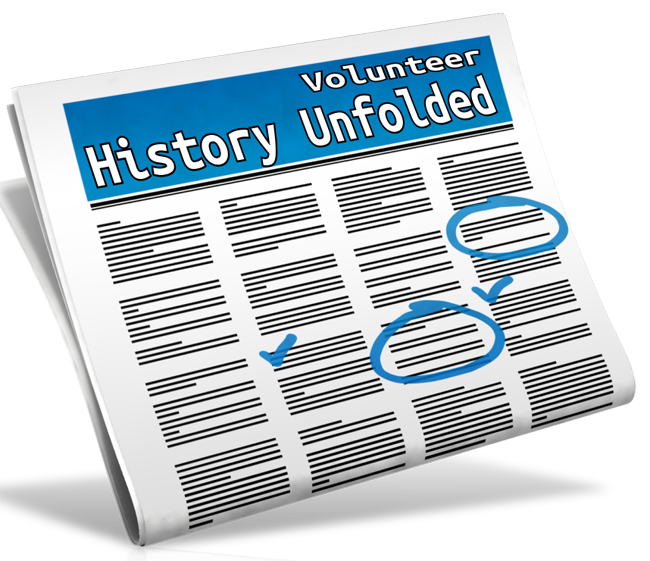
The National Endowment for the Humanities (NEH) is accepting proposals from institutions hoping to participate in the the National Digital Newspaper Program (NDNP). This program creates “a national, digital resource of historically significant newspapers published between 1836 and 1922 in U.S. states and territories.” Guidelines for 2014 are now available and proposals must be submitted by January 15, 2014.
According to the press release, “Each award supports a 2-year project to digitally convert 100,000 newspaper pages from that state’s collections, primarily from microfilm negative. Titles may be printed in Danish, English, French, German, Hungarian, Italian, Norwegian, Portuguese, Spanish or Swedish. The program provides access to this resource through the Chronicling America web site hosted by the Library of Congress. The site currently includes more than 6.6 million newspaper pages in English, French, German, and Spanish, from more than 1100 titles digitized by institutions in 30 states.”
For more program information, please visit the NEH’s program page or this page for technical information from the Library of Congress. Click here to see what institutions have participated.
I can’t say enough good things about this and other initiatives to support more digitized newspapers online. My book How to Find Your Family History in Newspapers will provide you with more about using these awesome resources to flesh out your family’s story, a tried and true research process, and loads of resources. Check it out in paperback or pdf e-book!
RootsTech 2014: Must-Have Tips for Visiting the Family History Library
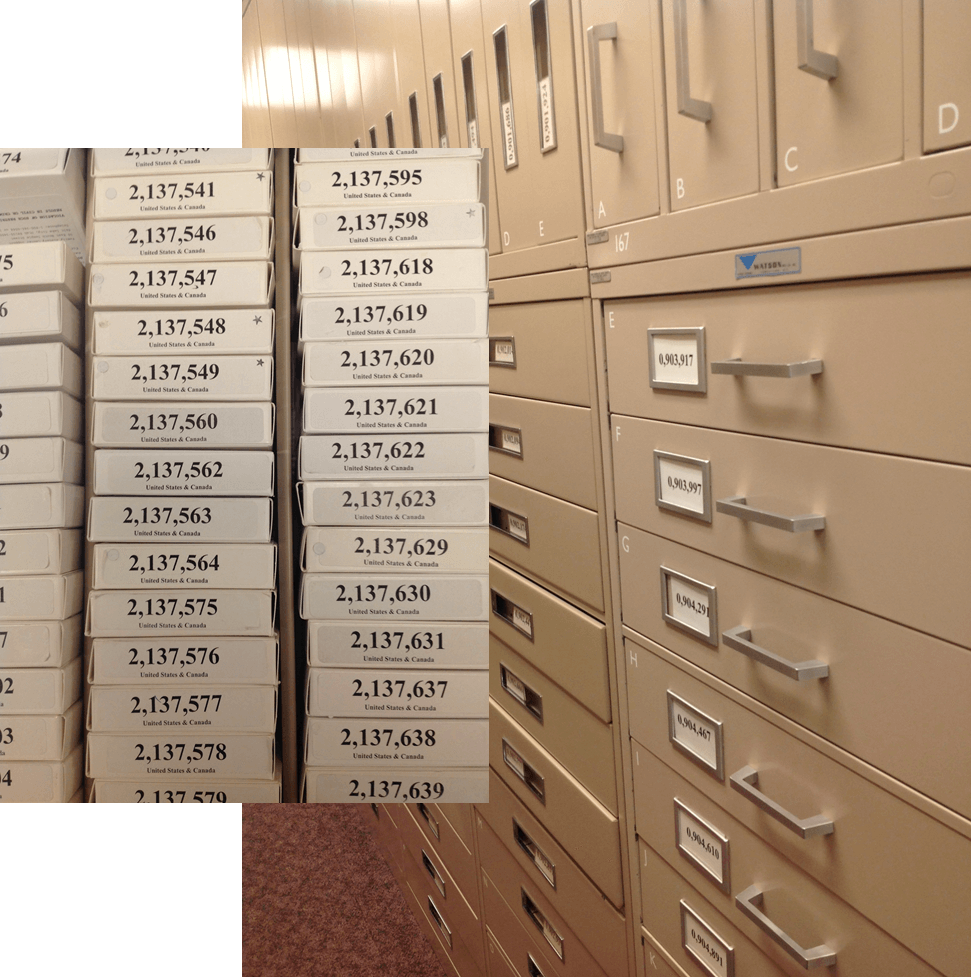
 Whether you’re going to RootsTech next week or not, at some point in your genealogical research you’ll want to use the Family History Library (FHL). The FHL, located in Salt Lake City, Utah, USA, has 6.875 billion historical records on microfilm, which contain an estimated 20.6 billion names. That’s a lot of ancestors!
Whether you’re going to RootsTech next week or not, at some point in your genealogical research you’ll want to use the Family History Library (FHL). The FHL, located in Salt Lake City, Utah, USA, has 6.875 billion historical records on microfilm, which contain an estimated 20.6 billion names. That’s a lot of ancestors!
The FHL and its sponsor organization, FamilySearch International, are busy digitizing and indexing all those records, but it’s going to take some time. And some of those records may never be digitized because of publication rights limitations or other issues. So you should know how to access all those great microfilms!
Yesterday I republished Episode 16 of the original Family History: Genealogy Made Easy podcast. It features a great interview with Margery Bell on using the Family History Library. The show notes have updated tips on using the online catalog. Click here for some must-have tips on preparing for your visit. You’ll get a lot more out of your limited time in the library if you know exactly what information you’re looking for and where you’re going to look for it!


